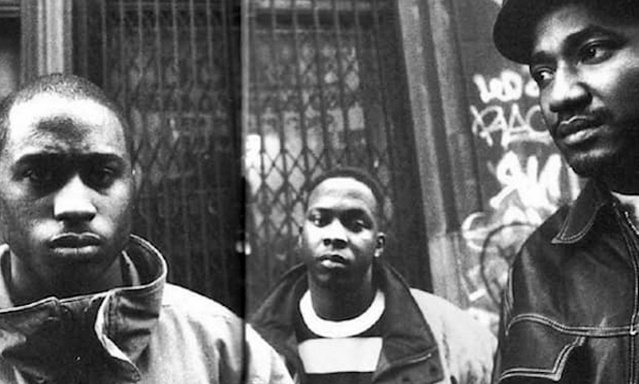
By Jae-Ha Kim
Chicago Sun-Times
March 5, 1997
![]()
A documentary by Peter Spirer. With Ice-T, Heavy D, the Fugees, and Salt-n-Pepa.
Rated R (for pervasive strong language and some drug content). Opening today at local theaters.
Peter Spirer’s documentary “Rhyme & Reason” widens the focus on hip-hop, presenting it as a lifestyle that happens to include music.
And by allowing the artists to narrate the piece, director Spirer manages to captivate viewers without glorifying or vilifying the controversial art form.
The 90-minute movie – which opens today at local theaters – traces hip-hop from its 1970s roots in the Bronx through Tupac Shakur’s death from gunshot wounds in September.
The film moves quickly and has an austere look that differentiates it from the slick rap videos that receive heavy air play on MTV. But it gets across its potent message about the power of hip-hop music loud and clear.
“Hip-hop is a voice for oppressed people who in many ways don’t have any other voice,” says Speech, formerly of Arrested Development.
Like “Hoop Dreams,” which showed how urban youths view basketball as a way out of the ghetto, “Rhyme & Reason” indicates that the glamor of rap can be just as seductive to youngsters looking for a better life.
“After . . . seeing my man who lives upstairs get killed and my brother shot, that showed me what type of world this is,” says Nas, sitting on the steps of the housing project where he grew up. “Now I can make my rap records and make my bread. I’m not a lawyer or a doctor, but I’m 21 with a start.”
Rap pioneer Ice-T, who received flak from some of his peers when he moved into a tonier part of Los Angeles, says, “I think the best thing I’m doing for my community is showing them that a brother like myself — without giving in to the man — can make it.”
The one thing that’s missing from the film is followup and context.
For instance, we’re taken into the Jack the Rapper hip-hop convention in an Orlando, Fla., hotel. The filmmakers allude to some tension at the convention, but don’t explain why the police showed up in riot gear. Was there violence, or did the authorities merely assume there would be trouble because of the bad rap hip-hop artists have received?
As one of the rappers points out, Arnold Schwarzenegger can shoot police officers in his films, but a hip-hop artist gets in trouble for rapping about the same thing on songs such as Ice-T’s “Cop Killers.”
Like Doug Pray’s “Hype” (which chronicled the Seattle music scene), “Rhyme & Reason” is as entertaining and enlightening as the music it documents.